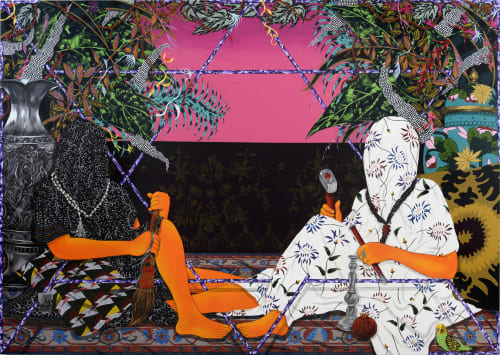The year of the revolution, another future member of Iran’s artistic diaspora was born in Tehran: Amir H. Fallah, a figurative painter now based in Los Angeles. Because of the political turmoil in Iran, Mr. Fallah had a much more unstable childhood. He grew up at the height of the Iran-Iraq war, when aerial bombings often forced families to take refuge in bunkers stocked with cans of food.
When the family decided to move to Austria, they entrusted their savings to a distant relative who ran off with the money, leaving them stranded for two years in Turkey. “We went from middle class to abject poverty overnight,” he recalled in a telephone interview.
Settling in Virginia, the family eventually regained its former status. After graduating from the University of California, Los Angeles, Mr. Fallah started exhibiting in Dubai in the United Arab Emirates in 2005. His first large-scale exhibition is at the Museum of Contemporary Art in Tucson, Ariz., through May 3.
“I don’t feel 100 percent anything, really, and I feel like I’m in a state of limbo, which is fine with me: I think that’s where richness lies,” he said of his multiple cultural identities. As a dark-skinned Iranian, he said, he suffered racism. “A lot of Iranians get a cultural pass because they can pass off as white, but I never had that experience,” he said.
His acrylic paintings are decorative and ornate, a bridge between two worlds. “For me, it’s interesting to mash up a detail from a Persian miniature or a Persian rug with a 1980s skateboard graphic, or references to graffiti art or graphic design and pop culture, because that’s kind of what I am,” he explained.
In his earlier body of work, faces are concealed with a bandanna or a scarf. “When you can’t see somebody’s physical features, then you have to focus on the other things around them,” he said. “It goes back to my own identity. People are always misreading me because I’m dark-skinned. That’s kind of where this comes out of.”
Mr. Fallah said the art world was focused on “areas it’s been neglecting,” such as African-American and Latino artists, and “some of that does trickle down to Iranian artists. But honestly, I haven’t seen a big boom.”

